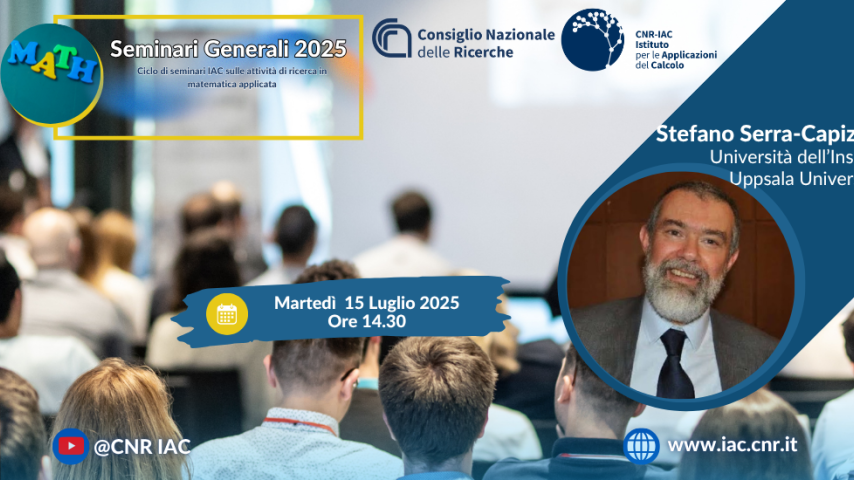
Proseguono Martedì 15 luglio 2025 alle 14.30 i Seminari Generali dell'IAC 2025.
Stefano Serra-Capizzano, professore di analisi numerica presso il Dipartimento di Scienze e Alta Tecnologia dell'Università dell'Insubria di Como e presso il Department of Information Technology - Uppsala University - Uppsala, sarà lo speaker del prossimo appuntamento con un talk, dal titolo A critical view on the Generalized Locally Toeplitz theory: past, present, perspectives, and beyond.
Il seminario si svolge in modalità mista, in presenza presso il CNR IAC di Roma, via dei Taurini 19 e in streaming (vedi link in calce), trasmesso sul canale YT dell'istituto.
Di seguito l'abstract.
The idea of Generalized Locally Toeplitz (GLT) sequences has been introduced as a generalization both of classical Toeplitz sequences and of variable coefficient differential operators and, for every sequence of the class, it has been demonstrated that it is possible to give a rigorous description of the asymptotic spectrum in terms of a function (the symbol) that can be easily identified.
This generalizes the notion of a symbol for differential operators (discrete and continuous) or for Toeplitz sequences, where for the latter it is identified through the Fourier coefficients and is related to the classical Fourier Analysis.
For every r, d ≥ 1 the r-block d-level GLT class has nice ∗-algebra features and indeed it has been proven that it is stable under linear combinations, products, and inversion when the sequence which is inverted shows a sparsely vanishing symbol (sparsely vanishing symbol = a symbol whose minimal singular value vanishes at most in a set of zero Lebesgue measure). Furthermore, the GLT ∗-algebras virtually include any approximation of partial differential equations (PDEs), fractional differential equations (FDEs), integro-differential equations (IDEs) by local methods (Finite Difference, Finite Element, Isogeometric Analysis etc) and, based on this, we demonstrate
that our results on GLT sequences can be used in a PDE/FDE/IDE setting in various directions, including preconditioning, multigrid, spectral detection of branches, fast ’matrix-less’ computation of eigenvalues, stability issues, asymptotic low-rank structures, and challenges such as the GLT use in tensors, stochastic, machine learning algorithms. We will discuss also the impact and the further potential of the theory with special attention to new tools and to new directions as those based on symmetrization tricks, on the extra-dimensional approach, and on blocking structures/operations.







